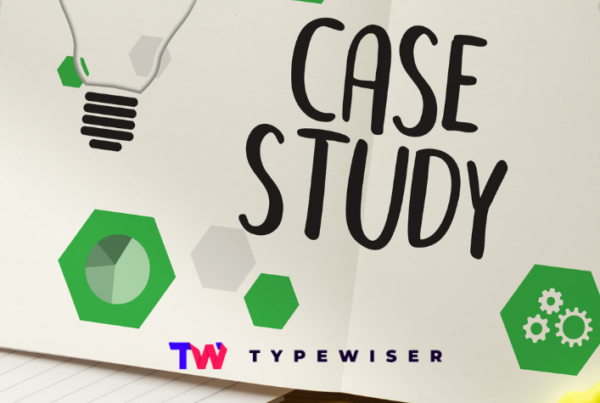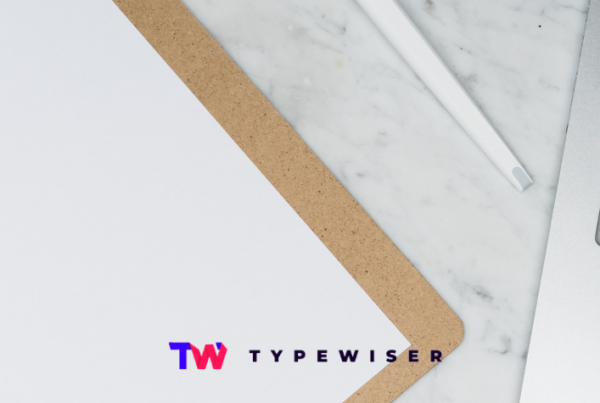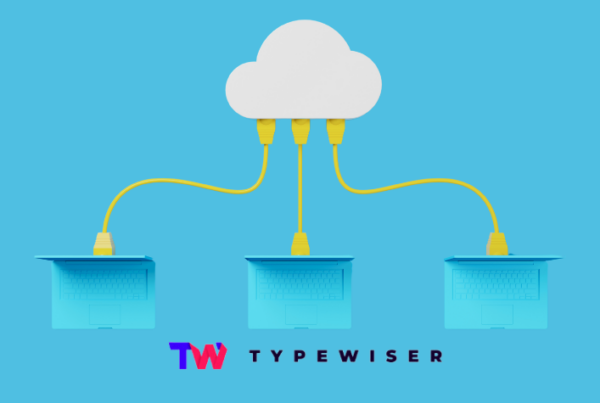Large Language Models (LLMs) like OpenAI’s ChatGPT have become staples for drafting text. However, when writing business-critical documents such as grant proposals, client reports, or detailed project plans, relying on a simple LLM alone can be problematic. These high-stakes documents demand precision, consistency, and domain knowledge that generic AI often lacks. In this article, we compare the capabilities of ChatGPT-style LLMs with Typewiser, a specialised generative AI writing platform. We’ll explore why mainstream LLMs are often insufficient for professional documentation and how Typewiser adds value for teams and organisations.
Limitations of Simple LLMs in Business Writing
 While tools like ChatGPT are powerful, users often encounter several issues when applying them to complex workplace documents:
While tools like ChatGPT are powerful, users often encounter several issues when applying them to complex workplace documents:
- Lack of context & domain knowledge: A general LLM used by ChatGPT doesn’t inherently know your specific industry, project details, or the criteria of a grant call. It may produce text that sounds fluent but omits key information or includes irrelevant details unless you painstakingly feed it all the context. The burden is on the user to provide extensive prompts and background for each section, which requires domain expertise and lots of prompt crafting. In short, you often need to guide the AI step-by-step to cover every important point. This frequent frustration ends up undermining any time savings expected through the use of AI, sometimes even setting you back with a negative net time-to-completion on a task.
- Accuracy and fact-checking concerns: Mainstream LLMs (ChatGPT) can “hallucinate” – confidently outputting incorrect facts or unsupported claims. In a business document, this is a serious risk; every statistic or assertion needs verification. The AI won’t automatically cite sources or flag dubious content. Ensuring truthfulness becomes the user’s responsibility, meaning extra time spent double-checking and correcting the AI’s output.
- Inconsistency in tone and style: When multiple contributors use an AI like ChatGPT, the resulting document can feel patchy – one part might be overly casual, another overly formal. The AI does not enforce a uniform style or terminology. These inconsistencies dilute the message and can harm an organization’s professional image. It often takes significant editing to harmonise tone and wording across sections (essentially negating some of the time saved by generation).
- High effort to guide and refine: Getting a well-structured proposal or report out of a generic AI isn’t as simple as typing a one-line prompt. Users typically must break down the task, prompt the AI for each subsection, and then iteratively refine the content. This requires skill in prompt engineering and a lot of oversight. You might also find yourself copying the AI’s output into your document editor, then back to the AI for rewrites – a clunky process. In other words, using a general LLM for complex writing still demands substantial human effort to organise, integrate, and polish the content.
How Typewiser Fills the Gaps
 Typewiser was built to address these shortcomings and streamline the creation of high-quality documents. Here’s how we add value for businesses and teams:
Typewiser was built to address these shortcomings and streamline the creation of high-quality documents. Here’s how we add value for businesses and teams:
- Built-in expert guidance: Typewiser plays the senior editor role. As you write, it provides smart guidance and linguistics-driven feedback to keep your document on track. The editor will alert you to missing pieces or vague sections and suggest improvements. For example, it ensures each section has the appropriate level of detail and evidence for your objective, flagging any missing concepts or weak support. This enforcement of best practices (clarity, completeness, relevance) helps ensure nothing important is overlooked and each part of the text is clear and effective. Essentially, the tool makes high-level writing advice available to every user, which is especially helpful for junior writers.
- Seamless knowledge integration: Unlike a plain LLM, Typewiser lets you upload your background materials into a private ‘Knowledge Library’. The AI then uses this context to align the generated content with your domain specifics. Need to include data from last quarter’s report or adhere to a specific grant guideline? Typewiser will type in relevant details from your provided sources. This means you spend less time hunting for facts or copying and pasting text for the AI. You get accurate, context-rich content that reflects your proprietary knowledge. The platform also has a built-in web reference search for finding credible sources, helping you back up claims with evidence when needed (something a vanilla LLM won’t do on its own). Even more, the truthfulness analysis it performs as you write flags passages within your text that would benefit from additional support – from scientific papers, market research, to news pieces – and even suggesting specific supporting and contradicting references.
- Consistent voice and quality: Typewiser ensures a uniform tone and terminology throughout the document. The AI can be tuned to your organisation’s style guide or past documents, so whether a piece is drafted by a junior analyst or a senior manager, the voice remains consistent. This homogeneity of style and quality builds a stronger brand voice and avoids confusing the reader with jarring shifts. Over time, using Typewiser also upskills team members – by following its suggestions, juniors quickly learn to write with a more polished, professional style. The platform guides users to craft high-performance documents with precision and ease, effectively leveling up the overall writing standard in the organisation.
- Efficiency and speed: By consolidating the writing process in one tool, Typewiser greatly accelerates document preparation. It offers an ever-increasing template database and AI-generated outlines to kick-start grant applications. Writers aren’t starting from a blank page, and the AI’s ongoing corrections reduce the number of revision cycles needed. All writing and reviewing can happen in one place, eliminating the back-and-forth between a chatbot, a text editor, and research tabs. In fact, teams have produced complete grant proposals in a matter of days with Typewiser, whereas those projects used to take weeks. Thanks to features like automated consistency checks and content suggestions, you can create polished content in hours instead of weeks. And critically, this speed doesn’t come at the cost of quality – the AI’s guidance makes sure that even a fast-tracked document meets the required standards for accuracy and clarity.
(Notably, Typewiser’s AI operates by orchestrating multiple specialised language models behind the scenes, rather than relying on a single general model. This multi-model approach helps it deliver superior results in each aspect of writing.)
Real-World Results
One recent example comes from a consulting team preparing an Innovate UK Smart Grant proposal – a complex application that typically takes several weeks of iterative writing. Using Typewiser, the team completed a high-quality draft in just a few days. The platform guided the junior writers through each required section, ensuring they addressed every evaluation criterion and backed up claims with data from the company’s archives. By the time senior consultants reviewed the document, it was already well-structured and cohesive, needing only minor tweaks before submission. Similarly, another team was able to finish an EIC Accelerator short application in a fraction of the usual time. These cases illustrate how a specialised tool can dramatically compress writing timelines without compromising on quality. In fact, the writers were able to work with greater confidence knowing that the AI had systematically checked the content for completeness and clarity at each step.
Conclusion
 General-purpose LLMs like ChatGPT have their place – they’re excellent for brainstorming and quick drafts – but they often provide only a partial solution for serious business documentation. The nuances of a big proposal or technical report (ensuring accuracy, completeness, consistent tone, and proper structure) require more oversight and intelligence than a one-size-fits-all AI can offer. Typewiser bridges that gap by combining generative power with domain-specific guidance and an end-to-end writing workflow.
General-purpose LLMs like ChatGPT have their place – they’re excellent for brainstorming and quick drafts – but they often provide only a partial solution for serious business documentation. The nuances of a big proposal or technical report (ensuring accuracy, completeness, consistent tone, and proper structure) require more oversight and intelligence than a one-size-fits-all AI can offer. Typewiser bridges that gap by combining generative power with domain-specific guidance and an end-to-end writing workflow.
By using Typewiser, organisations can produce documents faster without sacrificing quality, and in many cases even improving it. Junior team members are empowered to create text that reads as if a seasoned professional wrote it, while senior experts can spend more time on strategy and less on line editing. The overall effect is a more efficient workflow and a more uniformly high-quality output across the board.
“In an era where winning a grant or persuading a client can hinge on the clarity of your documents, having an AI partner like Typewiser is a strategic advantage.”



